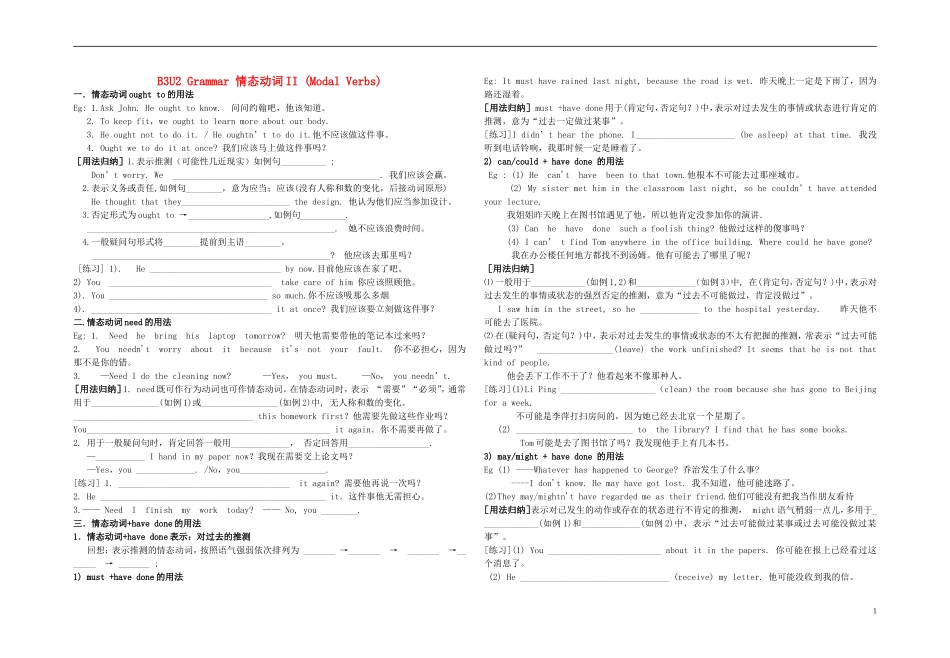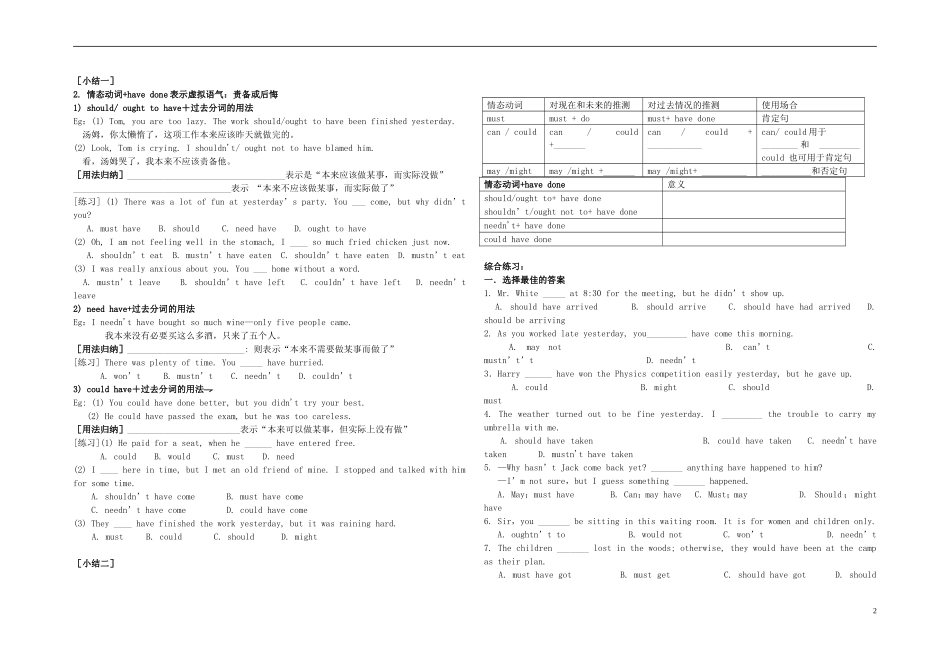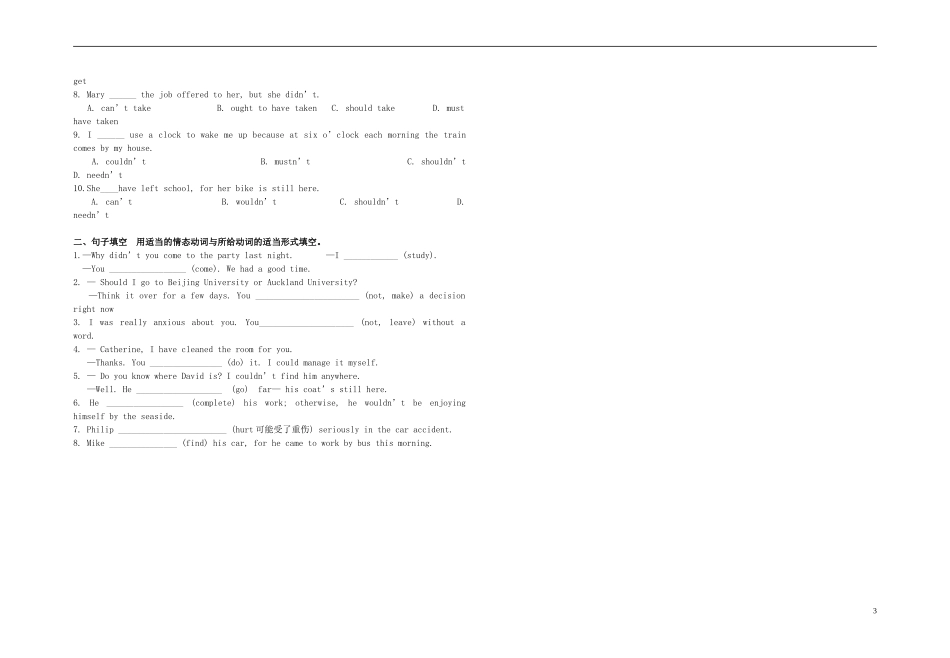B3U2 Grammar 情态动词 II (Modal Verbs) 一.情态动词 ought to 的用法 Eg: 1.Ask John. He ought to know. 问问约翰吧,他该知道。 2. To keep fit,we ought to learn more about our body. 3. He ought not to do it. / He oughtn’t to do it.他不应该做这件事。 4. Ought we to do it at once? 我们应该马上做这件事吗?[用法归纳]1.表示推测(可能性几近现实)如例句__________ ; Don’t worry. We ______________________________________________. 我们应该会赢。2.表示义务或责任,如例句________,意为应当;应该(没有人称和数的变化,后接动词原形)He thought that they________________________ the design. 他认为他们应当参加设计。 3.否定形式为 ought to →__________________,如例句__________._______________________________________________________. 她不应该浪费时间。 4.一般疑问句形式将________提前到主语________。_____________________________________________________? 他应该去那里吗? [练习] 1). He _____________________________ by now.目前他应该在家了吧。2) You ____________________________________ take care of him 你应该照顾他。3). You ___________________________________ so much.你不应该吸那么多烟4). ________________________________________ it at once? 我们应该要立刻做这件事?二.情态动词 need 的用法Eg: 1. Need he bring his laptop tomorrow? 明天他需要带他的笔记本过来吗?2. You needn't worry about it because it's not your fault. 你不必担心,因为那不是你的错。3. —Need I do the cleaning now? —Yes, you must. —No, you needn’t.[用法归纳]1. need 既可作行为动词也可作情态动词。在情态动词时,表示 “需要”“必须”,通常用于_______________(如例 1)或_________________(如例 2)中, 无人称和数的变化。________________________________________ this homework first?他需要先做这些作业吗?You______________________________________________________ it again.你不需要再做了。2. 用于一般疑问句时,肯定回答一般用_____________, 否定回答用__________________.—___________ I hand in my pap...


